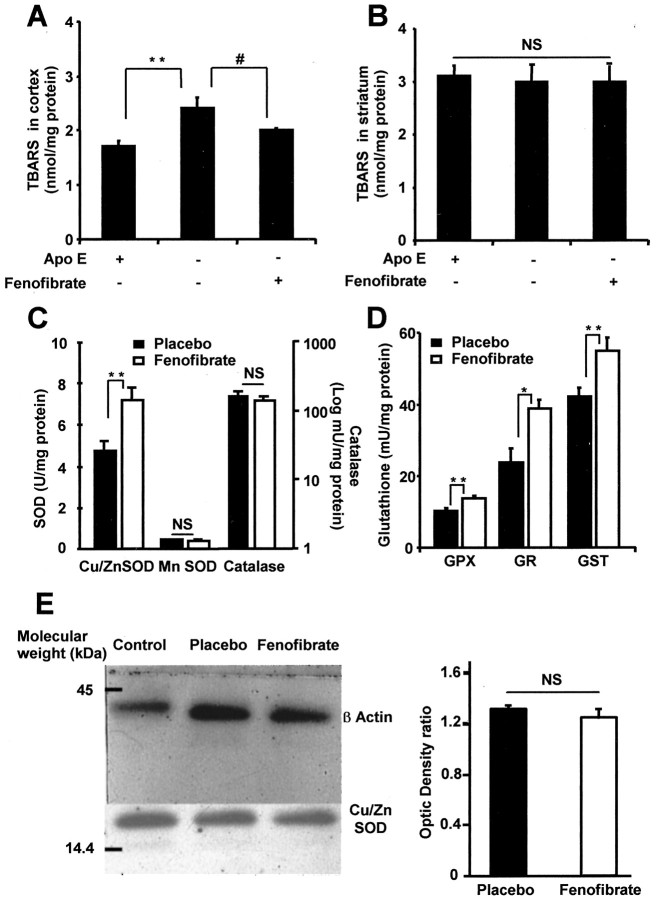Figure 3.
Chronic administration of fenofibrate modulates oxidative stress and antioxidant enzyme activities in the brain. A, B, Thiobarbituric acid-reactive substances (TBARS) were measured in the cortex (A) and striatum (B) of fenofibrate-treated Apo E-deficient mice and untreated C57BL/6 wild-type mice and then compared with the TBARS level in untreated Apo E-deficient mice (n = 5 per group). It appears that in Apo E-deficient mice, the basal level of TBARS is increased in the cortical area, whereas this oxidative stress marker is normalized by 14 d fenofibrate pretreatment. Moreover, there is no TBARS level change in the striatum. **p < 0.001; #p < 0.05. C, D, Antioxidant enzyme activities were measured in brain homogenates of C57BL/6 wild-type mice after a 14 d period under fenofibrate (n = 5) or placebo (n = 7). Four of the main antioxidant enzymes, copper/zinc superoxide dismutase (SOD), glutathione peroxidase (GPX), glutathione reductase (GR), and glutathione S-transferase (GST), are significantly increased in fenofibrate-treated mice, whereas manganese SOD and catalase are not. *p < 0.05; **p < 0.01. E, Conversely to the measure of SOD activity, Western blot analysis does not show any difference in the expression of this enzyme in placebo and fenofibrate-treated animals as compared with control (EGF-stimulated A431 cells). Densitometric values from placebo and fenofibrate-treated animals were not different. NS, Not significant.

